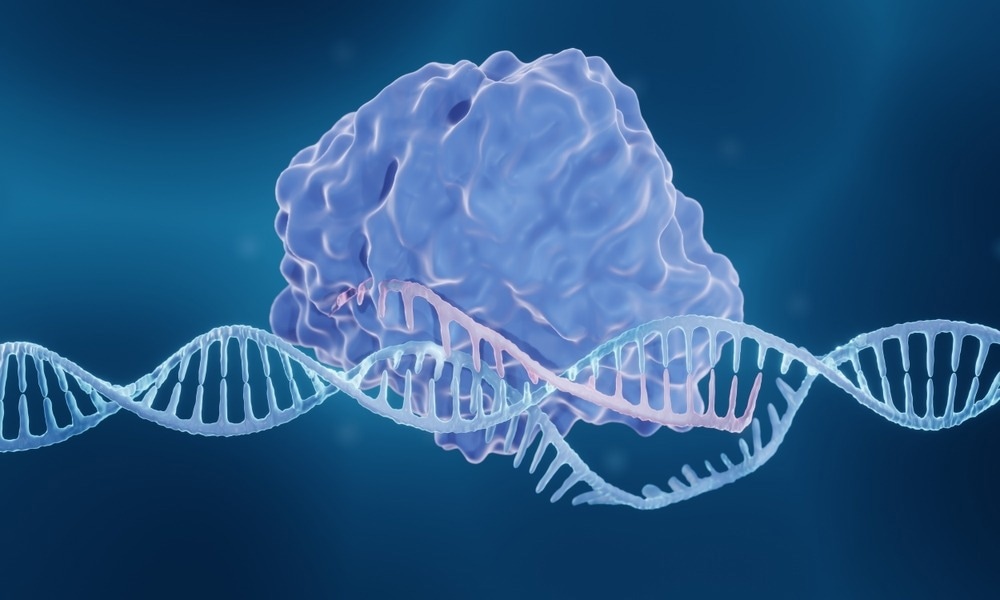Although the terms "pharma" and "biotech" might be interchangeable to many people, they are not identical. The drug development processes associated with biotechnology and pharmaceutical companies are different. Medicines manufactured by biotech companies are derived from living organisms or cells, while those produced by pharma companies have a chemical basis. Recently, the term "biopharma" has become quite popular. Biopharma companies use both biotechnology and chemical sources to develop medicines and medical products.

Image Credit: paulista/Shutterstock.com
The field of life science has been divided into several smaller industries in which pharma, biotech, and other smaller companies thrive. Currently, the pharmaceutical industry is more established than the biotech industry, which is growing rapidly. As mentioned above, these two industries overlap in producing biopharmaceutical products.
Development and Utilization of Pharmaceuticals
Pharmaceutical companies use plants and chemical compounds to develop medicines to cure or manage diseases. As stated above, pharma companies develop and market medicines predominantly produced from synthetic sources. Besides the methodology, another difference between biotechnology and pharmaceutical companies is that pharma companies predominantly focus on healthcare. It is easier to produce synthetic drugs via chemical synthesis than biological products because they are simpler and more stable than larger molecules.
Pharmaceutical products take a long time to develop, which includes research, the developmental phase, approval from global regulatory bodies like Food and Drug Administration (FDA), and finally, market launch.
Some pharmaceutical products, such as aspirin from Bayer AG, have been used since 1899. As of 2021, the world's top pharmaceutical companies are Johnson & Johnson, Roche, and Pfizer.
Development and Utilization of Biotechnology
Biotechnology has been used since ancient times to improve crops and breed animals. Biotech companies research, develop and produce a wide range of commercially viable agricultural and medicinal products in the modern financial world. They have developed novel gene therapies, monoclonal antibodies, pest-resistant crops, biofuels (e.g., ethanol), vaccines for chickenpox and coronavirus disease 2019 (COVID-19), drugs (e.g., penicillin), beer, laundry detergents, and other biological products to treat diseases.
Monoclonal antibodies, which comprise the largest class of biologics, can target specific receptors or chemicals to inhibit disease manifestation. Biologics are either isolated from humans, animals, or microorganisms and can be composed of proteins, nucleic acids, sugars, or combinations of these substances. These products can be obtained from living entities, such as tissues and cells. Cellular or gene-based biologics are at the forefront of biomedical research. These products can be effectively used for various diseases.
Pivot Bio is a biotech company that manufactures sustainable and safer fertilizers for farmers. These fertilizers provide nutrients to crops and do not have the adverse effects of synthetic fertilizers. This technology is used to produce genetically engineered animals for commercial gain, e.g., genetically engineered cows produce more milk.
Gene editing technologies (e.g., CRISPR-Cas 9) are associated with altering DNA by adding, modifying, or eliminating generic material. The FDA has approved Novartis' CAR-T (chimeric antigen receptor) therapy Kymriah for treating B-cell acute lymphoblastic leukemia in pediatric patients up to 25 years of age. CAR-T therapy is associated with the removal of T-cells from patients. Subsequently, these cells are modified by incorporating new genes that contain specific CAR that stimulates the T-cells to target and kill leukemia cells containing a specific CD19 antigen. Importantly, a clinical trial has estimated remission of cancer by 83% within three months of treatment.
In recent years, several biotechnology startup companies have used biotechnology-based methods to create breakthrough drugs. These companies are growing rapidly. According to Grand View Research, biotech companies are expected to reach $2.44 trillion globally by 2028.

Image Credit: ART-ur/Shutterstock.com
Products of Biopharma Companies to Treat Diseases
Biopharmaceuticals are produced in both academic and industrial laboratories. Since pharmaceutical companies tend to be larger, they sometimes do their own research or buy it from smaller biotech companies. Biopharma companies have played a vital role in developing the mRNA vaccine against severe acute respiratory syndrome coronavirus-2 (SARS-CoV-2), the causal agent of the ongoing COVID-19 pandemic. Most vaccines that were FDA-approved or received emergency use authorization have been manufactured by biopharma companies.
Big pharma companies have transformed from solely focusing on small-molecule drugs to biologics. Recently, pharma companies are increasingly developing relationships with academic researchers. Johnson & Johnson, Pfizer, and Eli Lilly were mainly pharma companies that have recently utilized biotechnology for their products. Hence these organizations could also be regarded as biopharma companies.
Many other biopharma companies have also introduced drugs to treat an array of diseases. For instance, AbbVie's Humira has been used to treat Crohn's disease, arthritis, and psoriasis. Rituxan, developed by Roche, is used to reduce tumor growth related to several types of cancer. Enbrel is a drug developed by Amgen/Pfizer that is used to treat several autoimmune diseases.
Differences in FDA Regulations for Biotech and Biopharma Companies
Although both pharma and biotech companies are required to abide by FDA regulations, their products follow different paths for obtaining approval. In the case of pharmaceutical products, synthetic drugs require approval from a new drug application (NDA) through the FDA's Center for Drug Evaluation and Research (CDER).
The NDA evaluates data from preclinical animal studies and human clinical trials. The results from these trials determine the safety profile and efficacy of the new drug. A small percentage of proposed drugs get approval from NDA. Besides efficacy and safety profile, each drug also undergoes quality monitoring.
The FDA approval for biotechnological products, such as mRNA vaccines and blood products, involves the submission of a Biologics License Application (BLA) to the Center for Biologics Evaluations and Research (CBER). Analysis of BLA data determines the safety and efficacy of the biotech product under consideration.

Image Credit: Sergey Nivens/Shutterstock.com
What is an Investors Perspective of Biotech and Pharma Companies?
From the investor's perspective, biotech and pharmaceuticals are different propositions. To develop a new drug, biotech companies generally require high operational costs as it includes research, development, and testing, which may take many years to complete. As the final product's success is unknown, i.e., it might be a historic breakthrough or failure, investors may experience high income or loss. Biotech companies may face several roadblocks if the research or the end product is controversial. For example, several countries have banned genetically modified crops and products.
The main advantage of biotech companies over pharmaceutical companies is that pharma companies typically hold rights for manufacturing and distributing their drugs only for five years. Instead, biotech companies get patent protection for 12 years.
Big pharma companies have a steady flow of income from their current products. They constantly aim to improve their existing product via research or to develop a new drug. These companies generally keep a steady pipeline of new products in various stages of the development process. A new drug might take up to 15 years to reach the market for public use.
Before receiving approval from the FDA, the new drug undergoes several phases of clinical testing that may take up to eight years. In addition, even after the drug reaches the market, it might not gain immediate approval from a physician for treatment.
Both pharmaceutical and biotech companies face unpredictability; however, in the case of successful products, they experience high profits. If the drug fails, small biotech firms typically incur a heavy loss that might be unrecoverable. The large-sized and diversified revenue-based pharmaceutical companies are better able to withstand setbacks and failures.
The Future of Pharma and Biotech Companies
Scientists believe that as we advance, the line between biotech and pharma companies will blur as they collaborate more to create new treatments. For instance, Johnson & Johnson and Allogene have collaborated on developing innovative cell therapies for cancer treatment.
According to Johns Hopkins, after the global success of the mRNA-based COVID-19 vaccine, scientists have focussed on developing other mRNA vaccines for other diseases, such as the common cold and human immunodeficiency virus (HIV).
At present, newer gene therapies associated with genome editing are being developed to activate or deactivate genes required to fight against diseases. This technique has shown significant efficacy against spinal muscular atrophy.
Continue Reading: Dissecting the Current Landscape of Biotechnology in Europe
Further Reading